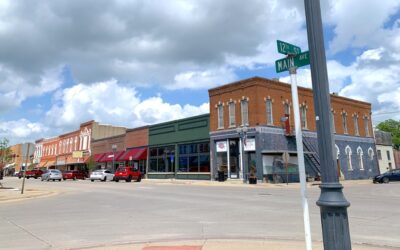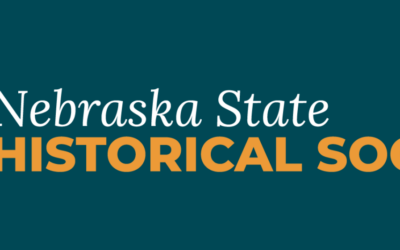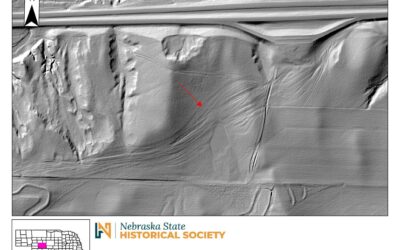 The early settlers of Nebraska faced many hardships, a great number of these weather and climate-related. Among the most destructive natural disasters were the sudden prairie blizzards. The blizzard of January 12, 1888, had an immense impact on the lives of all who remembered it. This blizzard was one of the most destructive and devastating in Nebraska history for a number of reasons: its unexpected arrival on what had been a relatively warm winter’s day; the timing, striking Nebraska and the Dakota territories when children were at school and farmers were out working in the fields; and the fierceness of the winds that swirled the snow around so much that visibility was near zero for hours. Because so many children were in school when the blizzard struck, the blizzard is often referred to as “the schoolchildren’s blizzard”. On January 12, 1940, an impromptu get-together of storm survivors was held at the Lindell Hotel in Lincoln, at the urging of W. H. O’Gara, former Speaker of the Nebraska House of Representatives. Those present elected to make their meeting an annual event, and the January 12, 1888 Blizzard Club was born.
The early settlers of Nebraska faced many hardships, a great number of these weather and climate-related. Among the most destructive natural disasters were the sudden prairie blizzards. The blizzard of January 12, 1888, had an immense impact on the lives of all who remembered it. This blizzard was one of the most destructive and devastating in Nebraska history for a number of reasons: its unexpected arrival on what had been a relatively warm winter’s day; the timing, striking Nebraska and the Dakota territories when children were at school and farmers were out working in the fields; and the fierceness of the winds that swirled the snow around so much that visibility was near zero for hours. Because so many children were in school when the blizzard struck, the blizzard is often referred to as “the schoolchildren’s blizzard”. On January 12, 1940, an impromptu get-together of storm survivors was held at the Lindell Hotel in Lincoln, at the urging of W. H. O’Gara, former Speaker of the Nebraska House of Representatives. Those present elected to make their meeting an annual event, and the January 12, 1888 Blizzard Club was born.
One of the major objectives of the club was to collect remembrances of the storm from the survivors and publish them in a book. World War II impeded efforts at first, but after the war, letters and monetary pledges poured in, and the book, In All Its Fury, was published in 1947. Many different experiences were documented by the club, among them that of Ellen Rennerfeldt:
“I was out in the blizzard of 1888, and I remember very well how we walked home from school about three o’clock. Our house was about twenty-five rods from the schoolhouse and there was a row of cottonwoods almost all the way and we followed them. The teacher took the lead and I was on the tail end.
The teacher boarded at our house and we had several of the school children at our house for several days before their parents could come for them.
My father had been to the mill at Lyons to get wheat ground for flour, and he was caught in the storm. He was driving an old blind mare and a horse hitched to the wagon. The blind mare had been over the road many times without seeing it, so he loosened the reins and let her find the way home; which she did, bringing him to safety.”
The club also collected this letter and sketch by Mr. Pearl F. Rickey:
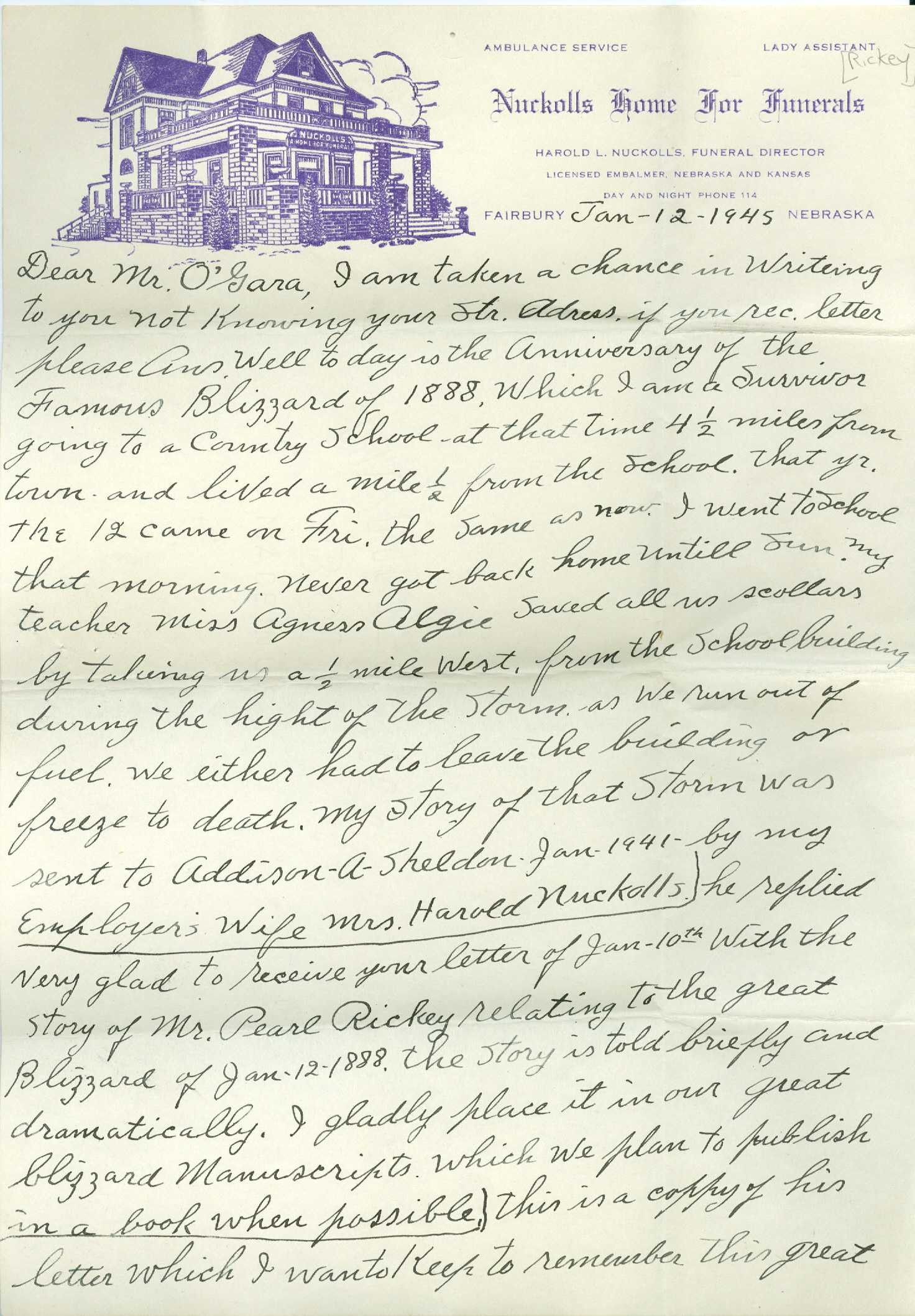

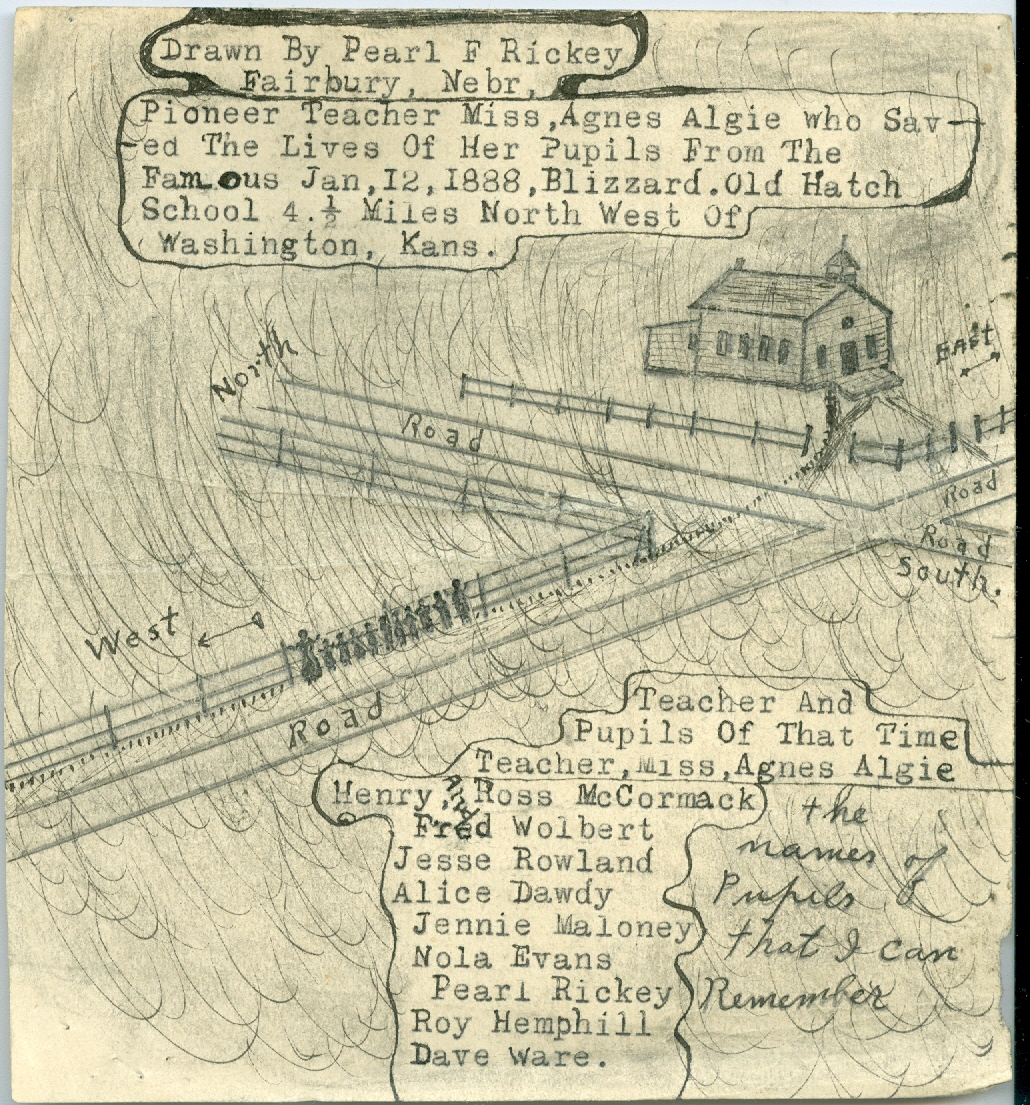
Letter by Pearl F. Rickey, p. 1 (NSHS RG3658.AM), Letter by Pearl F. Rickey, p. 2 (NSHS RG3658.AM), Sketch by Pearl F. Rickey (NSHS RG3658.AM)
The club continued to collect stories of this blizzard and other Nebraska blizzards. Today, these original letters and the official records of the Blizzard Club can be found at History Nebraska.


